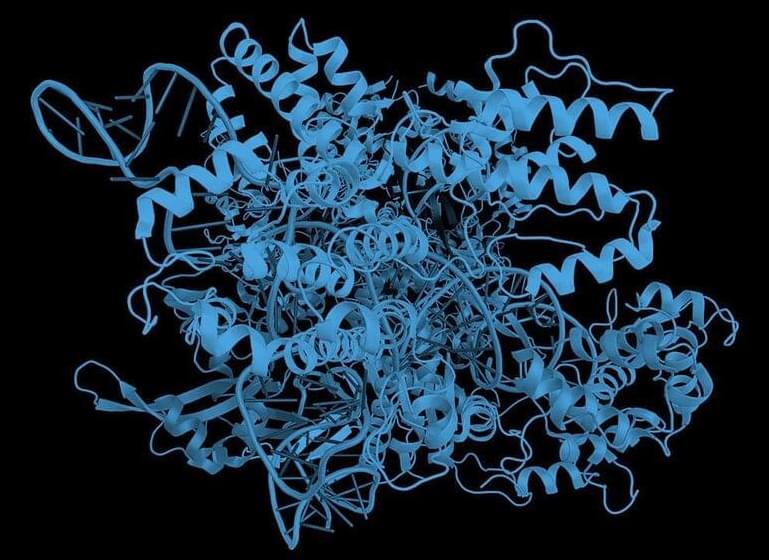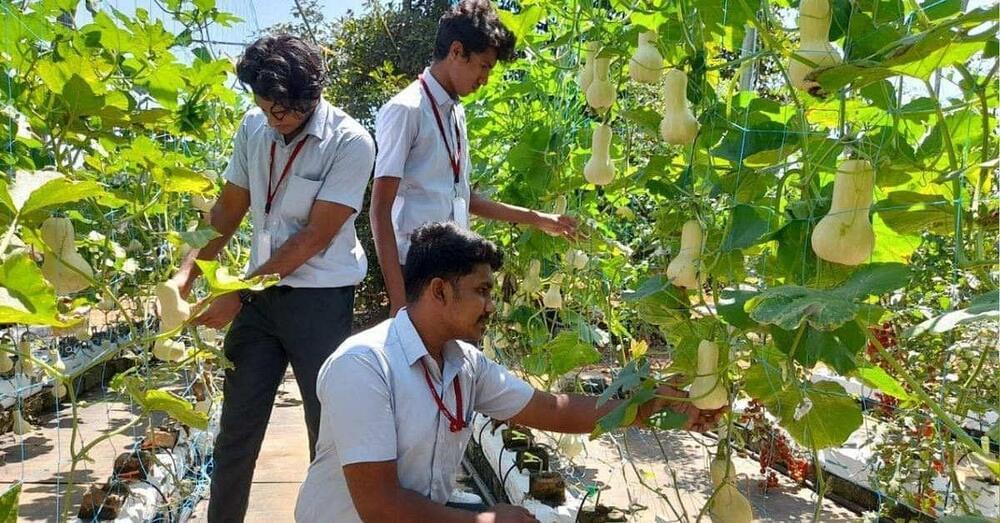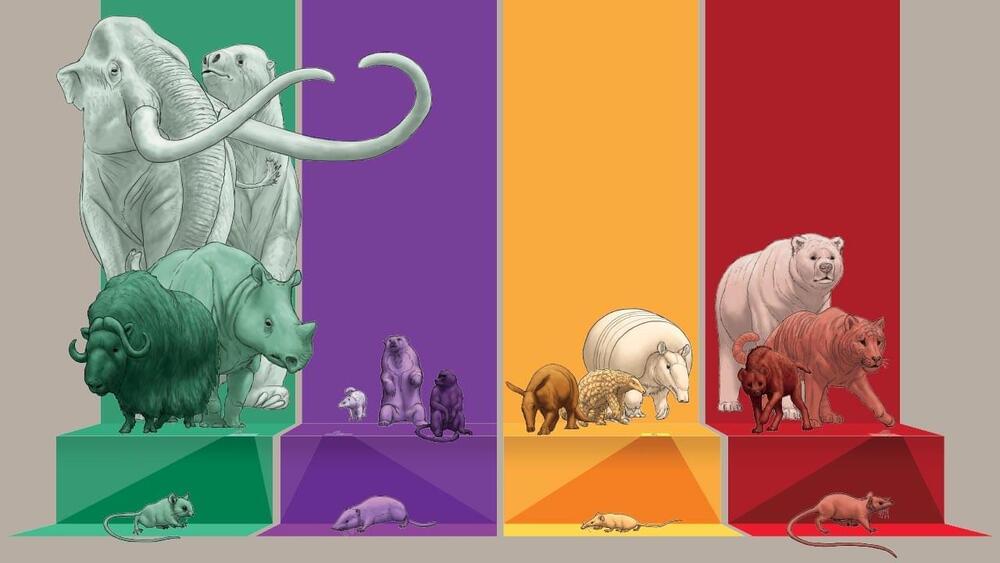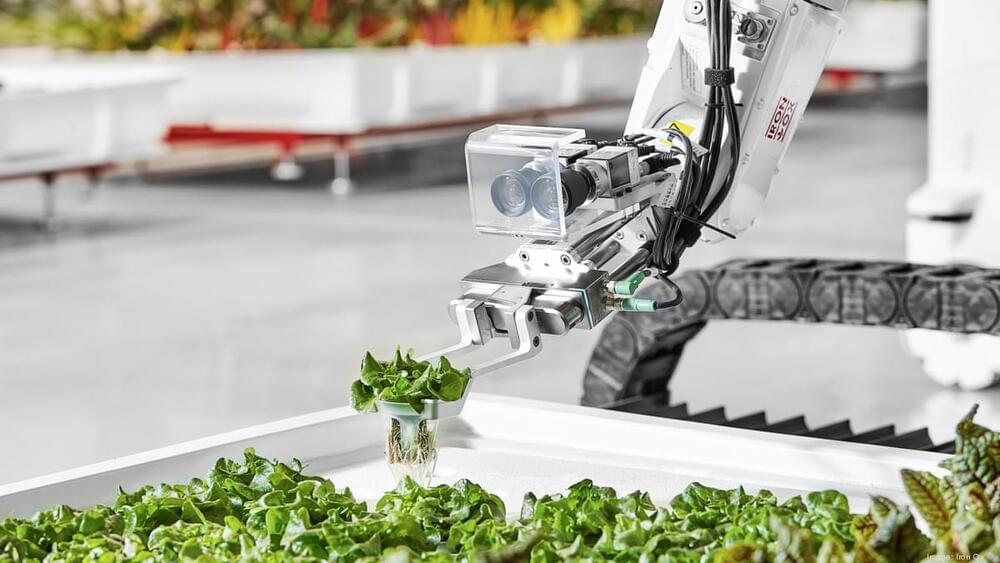Archive for the ‘food’ category: Page 110
Apr 27, 2022
How CRISPR-Cas9 gene editing is transforming healthcare and agriculture, a decade after its discovery
Posted by Shubham Ghosh Roy in categories: bioengineering, biotech/medical, food
Our podcast on the science and technology making the news. This week, we speak to Jennifer Doudna, the Nobel laureate who pioneered the revolutionary tool | Podcasts.
Apr 26, 2022
Tech Mahindra to generate new revenue streams and 1000 Jobs in UK
Posted by Shubham Ghosh Roy in categories: employment, food, robotics/AI
Automation will create new types of jobs.
What’s on their curriculum? Organic farming, aquaculture and lots more.
Apr 26, 2022
Watch: How Kerala School Aims to be Carbon Neutral With Bamboo Gardens & Solar Lights
Posted by Shubham Ghosh Roy in categories: education, food
Apr 24, 2022
Kochi Students Create Low-Cost Innovative Solution That Triples Hydroponics Yield
Posted by Shubham Ghosh Roy in categories: food, government
Moreover, this unique idea requires just 10% of water supply as compared to regular hydroponics cultivation. #InnovateIndia
Apr 24, 2022
Humans Disrupting 66 Million-Year-Old Fundamental Feature of Ecosystems — “This Hasn’t Happened Before”
Posted by Kelvin Dafiaghor in category: food
According to a new study, the U-shaped association between diet and size in modern land mammals could also stand for “universal,” as the relationship covers at least 66 million years and a range of vertebrate animal groups.
It’s been several decades since ecologists realized that graphing the diet-size relationship of terrestrial mammals yields a U-shaped curve when aligning those mammals on a plant-to-protein gradient. As illustrated by that curve, the plant-eating herbivores on the far left and meat-eating carnivores on the far right tend to grow much larger than those of the all-consuming omnivores and the invertebrate-feasting invertivores in the middle.
Apr 22, 2022
Domestic cats (Felis catus) discriminate their names from other words
Posted by Quinn Sena in category: food
Circa 2019
Domestic cats (Felis catus) and dogs (Canis familiaris) are the most popular companion animals; worldwide, over 600 million cats live with humans1, and in some countries their number equals or exceeds the number of dogs (e.g., Japan: dogs: 8,920,000, cats: 9,526,000)2,3. Cats started to cohabit with humans about 9,500 years ago4; their history of cohabitation with humans is shorter than that of dogs5, and they have been domesticated by natural selection, not by artificial selection6,7,8. Despite these differences in their process of domestication compared to that of dogs, cats too have developed behaviours related to communication with humans; for example, for human listeners, the vocalisations of domestic cats are more comfortable than those of African wild cats (Felis silvestris lybica)9. In addition, purring has different acoustical components during solicitation of foods than at other times, and humans perceive such solicitation purrs as more urgent and unpleasant than non-solicitation purrs10. These facts clearly indicate that domestic cats have developed the ability to communicate with humans and frequently do so; Bradshaw8 suggested that this inter-species communicative ability is descended from intra-species communicative ability.
Researchers have only recently begun to investigate cats’ ability to communicate with humans. Miklósi et al. showed that cats are able to use the human pointing gesture as a cue to find hidden food, similarly to dogs11. The researchers also suggested that cats do not gaze toward humans when they cannot access food, unlike dogs. However, a recent study revealed that cats show social referencing behaviour (gazing at human face) when exposed to a potentially frightening object, and to some extent cats changed their behaviour depending on the facial expression of their owner (positive or negative)12. Cats in food begging situations can also discriminate the attentional states of humans who look at and call to them13. In addition, Galvan and Vonk demonstrated that cats were modestly sensitive to their owner’s emotions14, and other research has indicated that cats’ behaviour is influenced by human mood15,16. Further, cats can discriminate their owner’s voice from a stranger’s17. This research evidence illustrates that domestic cats have the ability to recognize human gestural, facial, and vocal cues.
Continue reading “Domestic cats (Felis catus) discriminate their names from other words” »
Apr 22, 2022
First look: Robots helping harvest crops in Central Texas
Posted by Shubham Ghosh Roy in categories: food, particle physics, robotics/AI
The future is here.
Hints of a new particle carrying a fifth force of nature have been multiplying at the LHC – and many physicists are convinced this could finally be the big one.
Apr 22, 2022
Skroz draws on rural Croatian buildings for Eco Pig Farm
Posted by Shubham Ghosh Roy in categories: food, sustainability
Pigs live in modular pens in barns with airy lattice-like facades on this Croatian farm designed by architecture studio Skroz.
Skroz designed the Eco Pig Farm for Sin Ravnice, one of the first professional breeders dedicated to the long-neglected Slavonian Black pig, which is indigenous to the Slavonia region of eastern Croatia.
The pig is prized for its bacon and the local specialty sausage “kulen”, but its numbers dwindled during the 20th century as factory farming increased, because the breed requires access to pasture.
Apr 21, 2022
Revolutionary images of the birth of crystals
Posted by Shubham Ghosh Roy in categories: chemistry, food, physics
Josh SeehermanI don’t think he’s wrong.
Art ToegemannIt’s adjusting to users sharing a password.
Shubham Ghosh Roy shared a link.
Continue reading “Revolutionary images of the birth of crystals” »

















